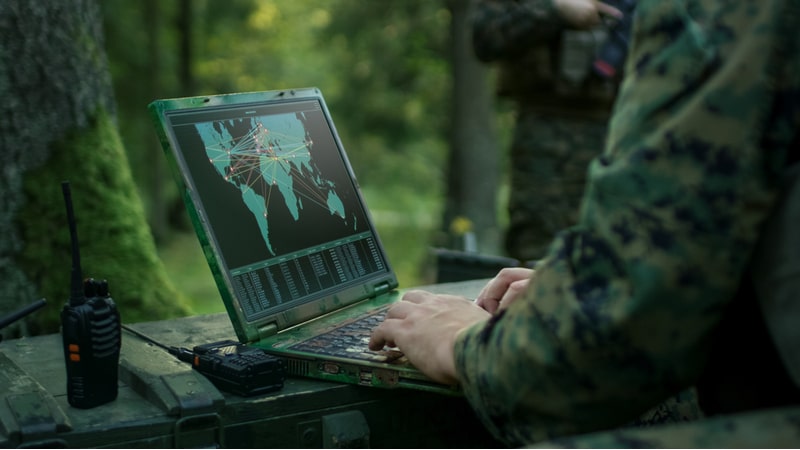
Two data czars from the U.S. Army talked about the service branch’s data maturation today, listing specific programs that are aiding in accelerating digital transformation to enable better decision making.
David Markowitz, the Army’s chief data and analytics officer (CDAO) as well as deputy chief information officer (CIO), highlighted the force’s data progress, detailing specifics on the Army’s data platform, which is currently in the process of being updated.

The Army is asking industry to help shape its acquisition approach and capability requirements as it re-competes its largest data analytics platform used across the entire service enterprise. Industry vendors have until Monday, Jan. 15 to respond to the RFI.
ADP 2.0 must have the ability to scale as the Army continues to innovate, Markowitz said during the AFCEA NOVA Army IT Day in McLean, Va., on Jan. 11.
“We want speed of innovation to occur at increasing scale across the Army,” the CDAO said. “We’ve been successful with the Vantage program, and it was literally increasing by week – the last two and a half years – the amount of new analytic products.”
“Every week new people were doing new data analytic activities supporting new types of decisions,” Markowitz continued, adding, “That’s an incredible rate of increase and we want to see ADP 2.0 increase again that rate of innovation in the Army by providing these three things in an easy way: the platform, the tools, and the services.”
An example the Army official said was “key” to scalability is the ability for a “user to come in at a junior level and grow.”
“It’s an incredible innovation engine that’s going to scale,” Markowitz said. “I’m really interested in industry’s RFIs on how we start buy capability that will allow us to have this journey over multiple years. And to me, that’s a key aspect of the RFI, and I’m looking for it, so absolutely interested in industry feedback.”
The CDAO also highlighted that the Army is working towards an enterprise data services catalog – which, according to the Army’s website, “is an interactive electronic registry that allows discovery of the Army’s Authoritative Data Sources and enables the development, refinement, integration, and maintenance of the Army’s ever-more-critical data assets.”
“We actually saw spikes that when we were able to produce an integrated, simplified data set, new decisions were being made by the Army at speed,” Markowitz said. He noted that the Army currently has 619 data dictionaries that are now available and searchable.
He added, “We’ve got the new platform, we’ve got the data dictionary that’s getting there, and we’re really trying to simplify the data space to make this go at scale.”
Finally, Markowitz highlighted that the Army is working towards data governance models that are based off industry best practices and standards.
“We’ve focused a lot the last two and a half years on people who generate data, making sure it’s curated – data stewards, functional data managers,” he continued. “The area we’re lacking is the user side. And so, there’s been a lot of chief data officers coming up across the U.S. Army. We want to actually codify that role and create a user community on the chief data officer side, so we have the people to speak coherently for the user.”
“It’s one thing to have a piece of technology, it’s another thing if you actually have someone responsible for it and can be sustained,” the CDAO said. “We really want to make sure that we’ve got – at the secretary level of the Army … the right kind of governance and policy so we can really use best in industry tools.”
Jennifer Swanson, the deputy assistant secretary of the Army for data, engineering, and software, highlighted that modular open system approaches (MOSA) are key in software modernization. The Army must utilize an agile framework rather than the legacy waterfall framework so it can continuously innovate.
“We have to get to a plug-and-play kind of environment so that we’re really able to take the best solutions from industry at any given time to give our soldiers the very best that we can,” Swanson said during her keynote speech this morning.
With the agile framework, programs should be delivering monthly or even weekly, Swanson said.
One example is the Army’s Persistent Cyber Training Environment (PCTE) – which enables realistic training with variable conditions to increase readiness and lethality of the Cyberspace Operations Forces, while standardizing, simplifying, and automating the training management process.
“They are executing a lot of different things at the same time. So, they’re planning the next sprint while they’re testing the current sprint,” Swanson said. “They’re actually able to deliver pretty much monthly releases at this point, which is huge when you think about DoT&E oversight, big program of record, very important cyber capability, and they’re really getting after it. So, a lot of the lessons learned from tests are being applied across our other programs that PCTE is helping us to solve.”
